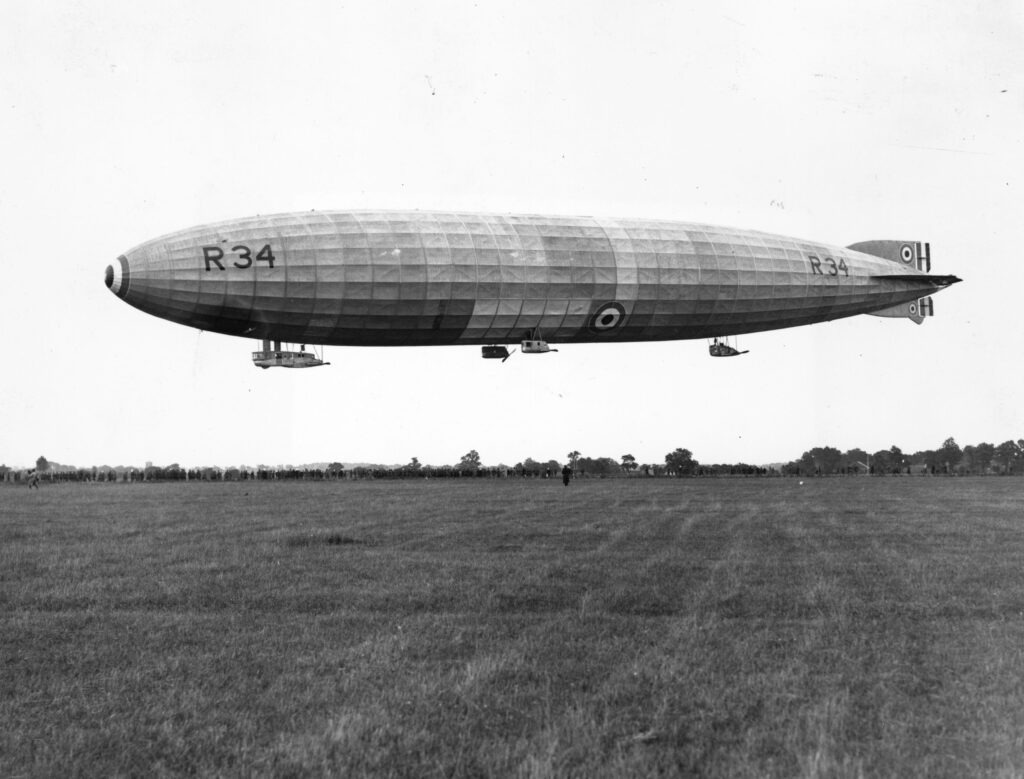Up, up, and away The world’s first airline, DELAG, founded in 1909, didn’t fly airplanes – it flew zeppelins, steerable aircraft inflated with gas that’s lighter than air. Before it ended in 1935, the German company flew the first transatlantic flights between Europe and South America. –airships.net
You read it first in this week’s The Factory in Guide magazine.
Today, most of us have flown on airplanes, but have you ever flown on a Zeppelin or blimp? In 1909, airplanes were still in the experimental stage really, and their designs were constantly being refined. Most airplanes in the very early 1900s could only carry the pilot and one passenger. But there was another design in the works that became very popular, airships!
An airship is a self-propelled aircraft that uses a lighter-than-air gas to make it fly. The pilot can steer and control the speed. There are three general types of airships, also known as dirigibles. There are rigid airships (such as Zeppelins), nonrigid airships (such as blimps), and semi-rigid airships, which use a framework but still rely on air pressure to maintain their shape. Some of the Goodyear Blimps are actually semi-rigid airships.
Count Ferdinand Adolf Heinrich August Graf von Zeppelin (and you thought your name was long!!!!) was interested in balloons in air traffic ever since he saw them used in the American Civil War as an observer. This later inspired him to start designing airships.
In 1895, Count von Zeppelin had submitted designs for an airship and was granted a patent, and in 1899 started building his first airship, the Zeppelin LZ1. As the designs became better, an airline company, DELAG, was formed and the first commercial flights were offered. When World War I broke out in July of 1914, these airships were also used in the German Army and Navy. Several of the ships were used in training exercises during the war.
Between 1910 and the outbreak of World War I in 1914, DELAG zeppelins carried over 34,000 passengers on over 1,500 flights, without a single injury. The majority of the passengers were given free flights to publicize the zeppelin industry (especially members of German royalty, military officers, aristocrats, government officials, and business leaders), but DELAG also carried 10,197 paying passengers before having to cease operations with the beginning of the war.
DELAG offered the world’s first transatlantic passenger airline service, using LZ-127 Graf Zeppelin to make regular, scheduled flights between Germany and South America beginning in 1931. Graf Zeppelin crossed the South Atlantic 136 times before being retired in 1937.
The airships were not without their accidents, however. Several were crashed, but fortunately, most crashes did not include fatalities. In fact, most people were able to walk away unharmed.
Today, the blimps are used mostly for publicity and advertising, and commercial airplanes are the primary way to travel. But who knows what tomorrow will bring?!

This reminds me of “…Many shall run to and fro and knowledge shall increase.” Dan. 12:4 NKJV
Scripture taken from the New King James Version, Copyright 1982 by Thomas Nelson. Used by permission. All rights reserved.
Learn More About This Fact
For more interesting facts, click on the buttons below!






